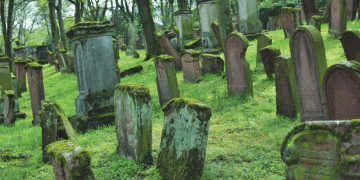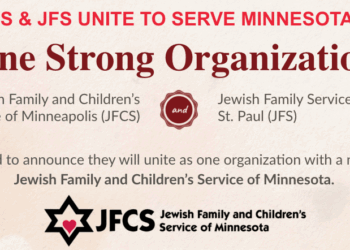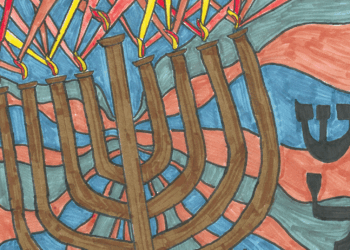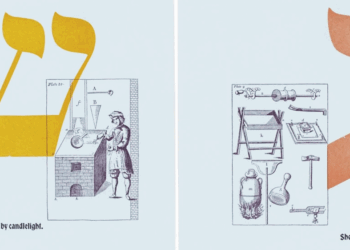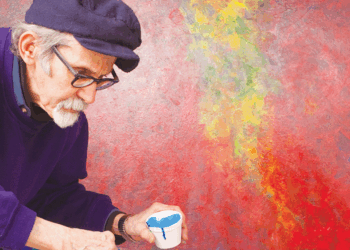Poll finds that 22 percent of U.S. Jews describe themselves as having no religion
By URIEL HEILMAN
NEW YORK (JTA) — There are a lot more Jews in America than you may have thought – an estimated 6.8 million, according to a new study. But a growing proportion of them are unlikely to raise their children Jewish or connect with Jewish institutions.
The proportion of Jews who say they have no religion and are Jewish only on the basis of ancestry, ethnicity or culture is growing rapidly, and two-thirds of them are not raising their children Jewish at all.
Overall, the intermarriage rate is at 58 percent, up from 43 percent in 1990 and 17 percent in 1970. Among non-Orthodox Jews, the intermarriage rate is 71 percent.
The data on Jewish engagement come from the Pew Research Center Survey of U.S. Jews, a telephone survey of 3,475 Jews nationwide conducted between February and June and released on Tuesday.
The population estimate, released Monday, comes from a synthesis of existing survey data conducted by the Steinhardt Social Research Institute and the Cohen Center for Modern Jewish Studies at Brandeis University.
While the Steinhardt/Cohen study, called “American Jewish Population Estimates: 2012,” is likely to be a matter of some debate by demographers and social scientists, it is the Pew study that offers an in-depth portrait that may influence Jewish policymaking for years to come.
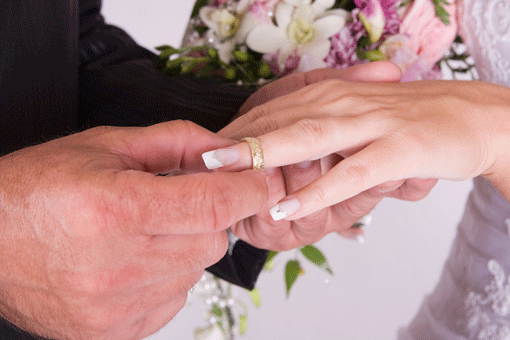
Among the more notable findings of the Pew survey:
• Overall, 22 percent of U.S. Jews describe themselves as having no religion, and the survey finds they are much less connected to Jewish organizations and much less likely to be raising their children Jewish. Broken down by age, 32 percent of Jews born after 1980 – the so-called millennial generation – identify identify as Jews of no religion, compared to 19 percent of baby boomers and just 7 percent of Jews born before 1927.
• Emotional attachment to Israel has held steady over the last decade, with 69 percent of respondents saying they feel attached or very attached to Israel. Forty-three percent of respondents said they had been to Israel.
• Far more respondents said having a good sense of humor was essential to their Jewish identity than observing Jewish law — 42 percent compared to 19 percent.
• Approximately one-quarter of Jews said religion is very important in their lives, compared to 56 percent among Americans generally.
• Less than one-third of American Jews say they belong to a synagogue. Twenty-three percent of U.S. Jews say they attend synagogue at least once or twice a month, compared with 62 percent of U.S. Christians.
The Pew study is the first comprehensive national survey of American Jews in more than a decade. The last one, the 2000-01 National Jewish Population Survey (NJPS), was conducted by the umbrella organization of North American Jewish federations and counted 5.2 million Jews, including children. But critics said that study’s methodology was flawed and undercounted American Jews.
Both the Pew survey and the Steinhardt/Brandeis study put the number of U.S. Jewish adults at about 5.3 million, including Jews who do not identify as Jewish by religion. The Steinhardt/Brandeis study counted an additional 1.6 million Jewish children for a total of 6.8 million Jews in America. The Pew study counted 1.3 million Jewish children.
Overall, Jews make up about 2.2 percent of Americans, according to Pew. By comparison, 6.06 million Jews live in Israel, according to Israel’s Central Bureau of Statistics.
Because of the differences in methodologies between the new surveys and the NJPS, the increased number of U.S. Jews likely overstates any actual growth.
Leonard Saxe, one of the authors of the Steinhardt/Brandeis study, told JTA there has been some growth during the last decade, but he could not put a number on it. Saxe attributed the growth to the immigration of Russian-speaking Jews, programs to bolster Jewish identity and shifts in attitude that have enabled many children of interfaith marriages to be raised with a Jewish identity.
The Pew study found that about 10 percent of American Jews are former Soviet Jews or their children.
About 65 percent of American Jews live in just six states, according to the Steinhardt/Cohen estimates: New York (20 percent), California (14 percent), Florida (12 percent), New Jersey (8 percent), Massachusetts (5 percent) and Pennsylvania (5 percent). The other four states in the top 10 — Illinois, Maryland, Texas and Ohio — add another 15 percent. The three most Jewish metropolitan areas are New York, South Florida and Los Angeles.
Among Jewish denominations, the Reform movement remains the largest: 35 percent of respondents identified as Reform, according to the Pew study. The second-largest group is Jews of no denomination (30 percent), followed by Conservative (18 percent) and Orthodox (10 percent).
As with other studies, the Pew study found that the Orthodox share of the American Jewish population is likely to grow because Orthodox Jews tend to be younger and have larger families than Jews generally. In addition, while past surveys showed about half of respondents raised as Orthodox were no longer Orthodox, the Orthodox retention rate appears to be improving, with just a 17 percent falloff among 18- to 29-year-olds.
Most denominational switching among American Jews, however, remains in the direction of less traditional Judaism.
In the Pew survey, 90 percent of those who identified as Jews by religion and are raising children said they are raising them Jewish. By comparison, less than one-third of those who identified themselves as Jews of no religion are raising their kids as Jewish.
Among inmarried Jews, 96 percent are raising their children as Jews by religion (as opposed to ethnicity), compared to 45 percent among intermarried Jews.
On Jewish observance, some 70 percent of respondents to the Pew survey said they participated in a Passover seder in 2012 and 53 percent said they fasted for all or part of Yom Kippur that year. The numbers represent declines from the 2000-01 NJPS, which found seder participation rates at 78 percent and Yom Kippur fasting at 60 percent.
The new Pew survey found that about 23 percent of U.S. Jews say they always or usually light Sabbath candles, and about 22 percent reported keeping kosher at home.
While most of those surveyed by Pew said they felt a strong connection to Israel, and 23 percent reported having visited the Jewish state more than once, the respondents expressed significant reservations about the current Israeli government’s policies vis-a-vis the Palestinians.
Forty-four percent said West Bank settlement construction hurts Israel’s security interests, and only 17 percent said continued settlement construction is helpful to Israeli security. Thirty-eight percent of respondents said the Israeli government is making a sincere peace effort with the Palestinians.
The Pew survey also asked respondents about what it means to be Jewish, offering several options. The most popular element was remembering the Holocaust at 73 percent, followed by leading an ethical life at 69 percent.
Fifty-six percent cited working for justice and equality; 43 percent said caring about Israel; 42 percent said having a good sense of humor; and 19 percent said observing Jewish law.
Sixty-two percent of respondents said being Jewish is primarily a matter of ancestry and culture; 15 percent said it was mainly a matter of religion. Most Jews said it is not necessary to believe in God to be Jewish. In the survey, 60 percent said a person cannot be Jewish and believe that Jesus is the messiah.








